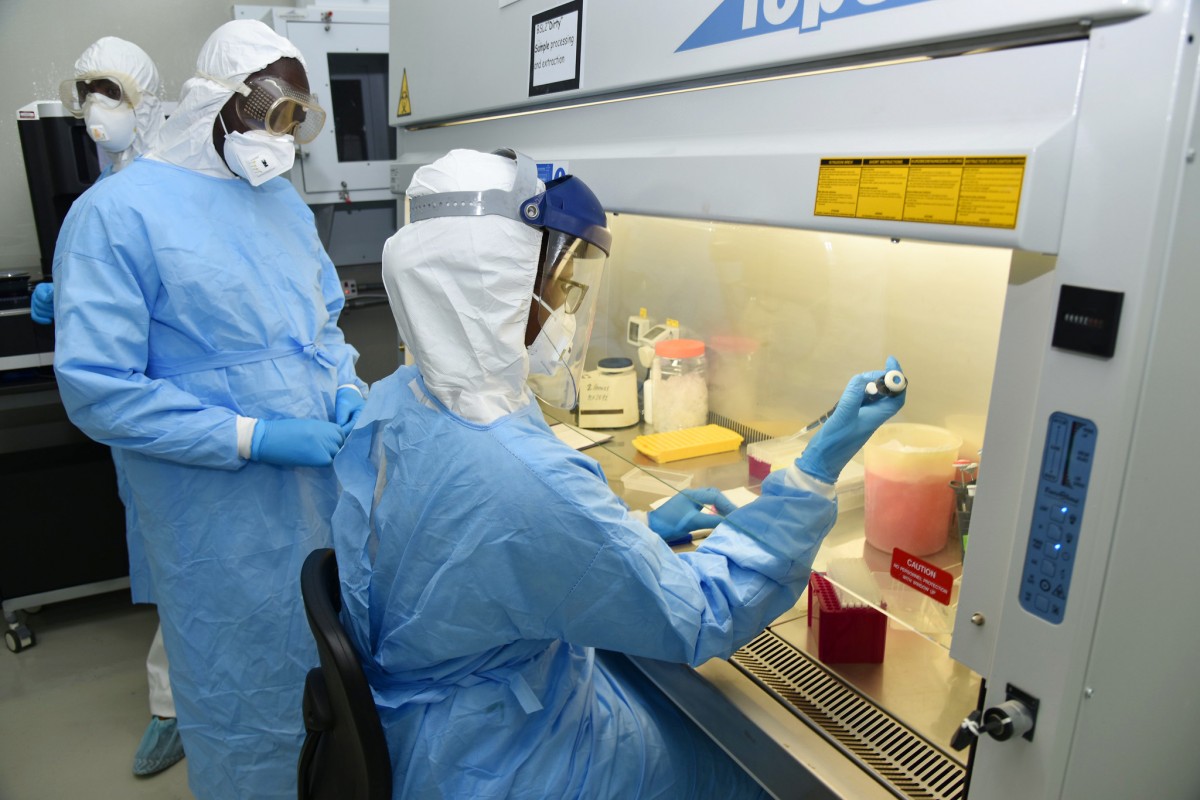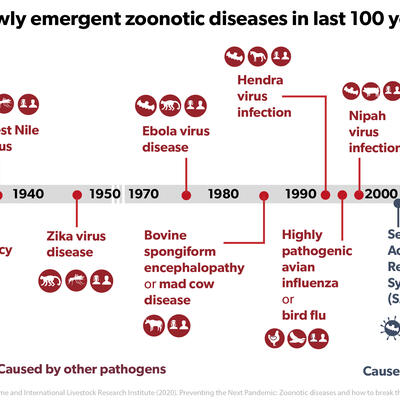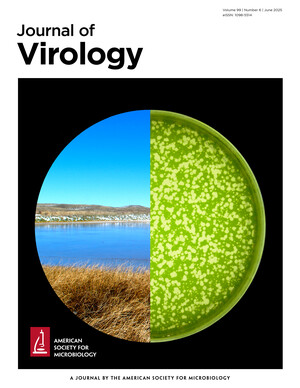
International Livestock Research Institute scientists support Kenyan government to identify SARS-CoV-2 variants
In the Nairobi laboratories of the International Livestock Research Institute (ILRI), the organization's scientists continue to contribute to the fight against COVID-19.
Since mid-2020, ILRI – a CGIAR research centre -- has been supporting Kenya’s Ministry of Health to process COVID-19 tests. Now, following a request from the Kenyan government, the institute's labs, equipment and expert staff will be put to work sequencing the entire genome of SARS-CoV-2 circulating in Kenya -- the virus that causes COVID-19 -- and monitoring the different variants that emerge in Kenya's population or arrive from outside its borders.
This 'genomic surveillance' will provide important information about which strains of the virus make people sicker, or are more easily transmitted – and in the long term, help ensure the right vaccines and diagnostic tests are used.
ILRI genomics experts have years of experience working on zoonotic pathogens: diseases that jump from animals to humans, like Rift Valley fever and Middle East respiratory syndrome (MERS). And the next-generation sequencing equipment in ILRI's Nairobi lab is among the most sophisticated in Africa.
‘There's a moral aspect to it,’ said Ulf Magnusson from the Swedish University of Agricultural Sciences and head of the animal health activities within the CGIAR Research Program on Livestock, which has redirected $700,000 of its funding to support the effort by the ILRI team.
‘We felt that if you have the skills, the personnel and the equipment, and the Kenyan Government asks you to help, there's a moral imperative to do so,’ Magnusson said. ‘This is a global emergency.’

Scientists preparing samples in biosafety level III facilities at ILRI. Photo P. Karaimu/ILRI
Chasing mutations
From this week, swabs taken from positive-testing patients in Kenyan hospitals will be sent to ILRI's lab. ILRI senior scientist Samuel Oyola and his team will then isolate the coronavirus genetic material, amplify it, and use NextSeq high-throughput DNA sequencing equipment to decode the genes and learn more about the virus.
‘Once we have the genetic readout of the virus, we are able to analyse it and compare it to the original form of the virus, and see the parts of the genome that have mutated or changed -- and then relate them to what is known about the consequences of such mutations,’ said Oyola. The strains circulating in Africa may well be different to those in other parts of the world since the virus is continuously mutating, he says.
‘What we are putting in place here is something that will help us monitor in near real time how this pathogen is evolving in the country.’
This is particularly important, he said, as the current leading vaccines developed against COVID-19 rely on our immune systems recognizing one single protein associated with the virus, called the spike protein. If mutations change the structure of that protein in the virus, our immune systems may no longer be able to 'see' the virus so well, rendering the vaccine less effective.
One Health
Calling on ILRI’s animal health scientists and repurposing some of the institute’s veterinary research capacity to respond to a global public health emergency is ‘a prime example of the 'One Health' approach in action,’ said Bernard Bett, an ILRI senior scientist who specialises in animal and human health and leads the One Health Research, Education and Outreach Centre in Africa (OHRECA).
In cases where problems or diseases affect multiple sectors at once, a One Health approach means bringing experts from the fields of medicine, veterinary science, social science and environmental science together to work on solutions, he said.
This is particularly helpful for zoonotic diseases like COVID-19 which ‘spillover’ from animals to humans and vice versa, and demand a highly coordinated multidisciplinary effort to control their spread and understand their effects.
Team effort
Kenya had some success combating the virus in the early days of the pandemic with curfews and shutdowns. Vaccinations have begun, but President Uhura Kenyatta announced on 26 March this year that the country is now ‘squarely in the grip of a third wave of the pandemic.’ Daily case numbers are expected to reach 3000 over the next month, around seven people are dying every day – the highest death rate since the start of the pandemic – and hospitalizations are spiking, Kenyatta said. ‘The stress the pandemic is placing on our health system is unparalleled.’
That makes the genomic surveillance even more timely.
‘The work demonstrates how ILRI can be nimble and pivot support to the Kenyan government on issues of national and global importance like COVID-19,’ said Jimmy Smith, the Director-General of ILRI. ‘We're happy to be able to play our part in fighting the pandemic in Kenya.’
Doing such important work in Kenya may also pay dividends once the current pandemic is over. Spending months monitoring SARS-CoV-2 will further strengthen ILRI’s expertise at genomic surveillance, says Magnusson. ‘It will help to create a critical mass of people doing this in Africa,’ he says: people with a skillset that may be critical for picking up the next pandemic.
Banner image: 3D rendering of the coronovirus COVID-19 developed by Annabel Slater, ILRI digital media and content specialist.
--
Learn more about ILRI and the CGIAR's history in contributing to the One Health approach: INNOVATION: Preventing the next pandemic through a One Health approach


















